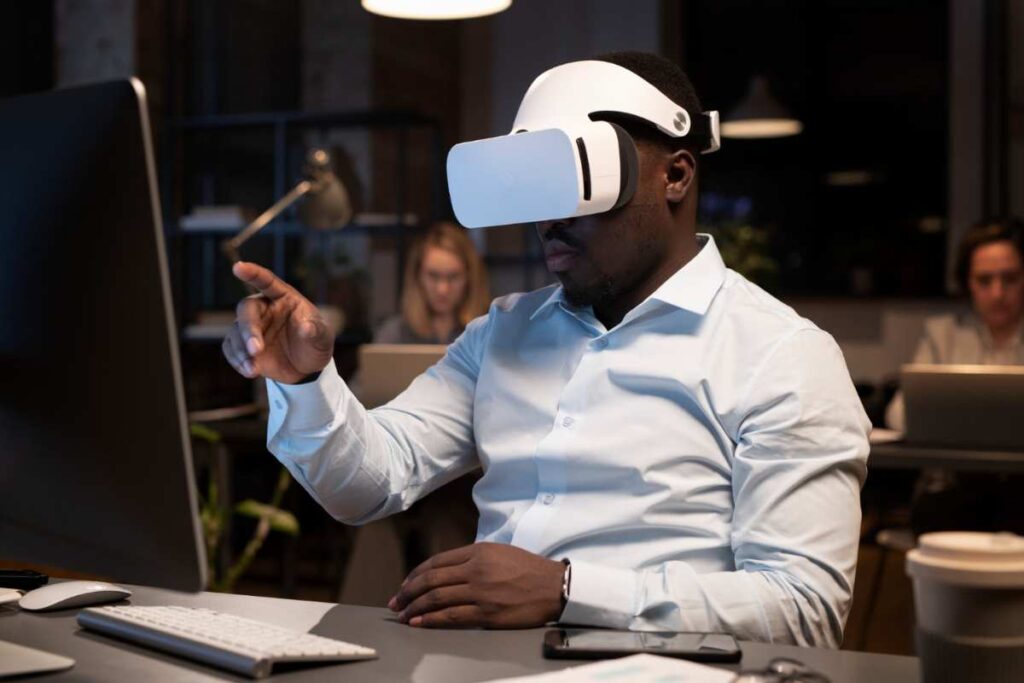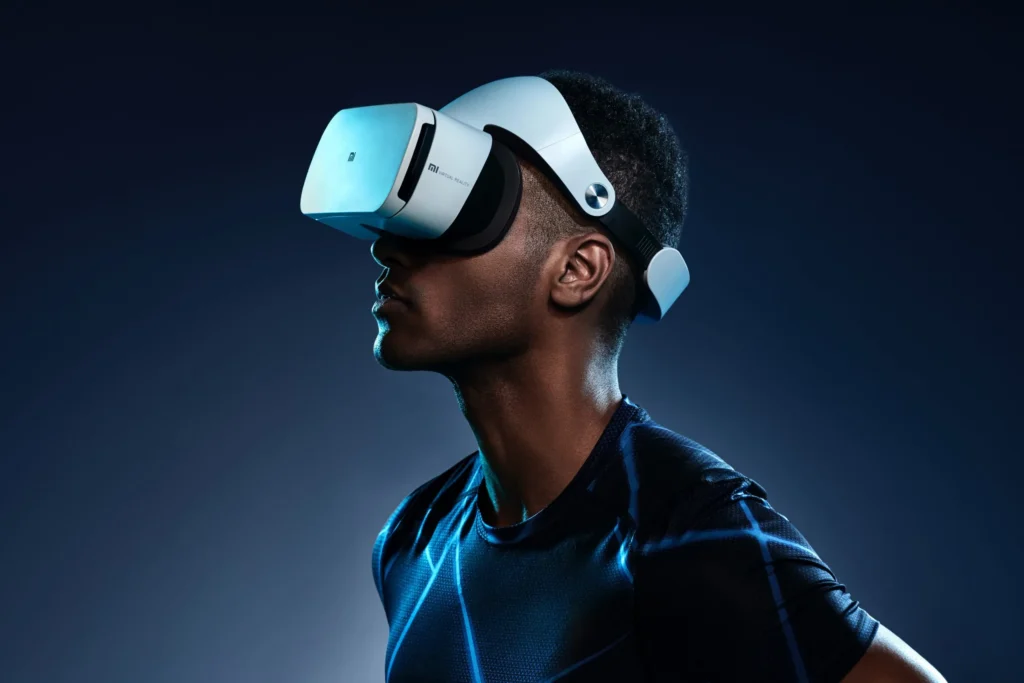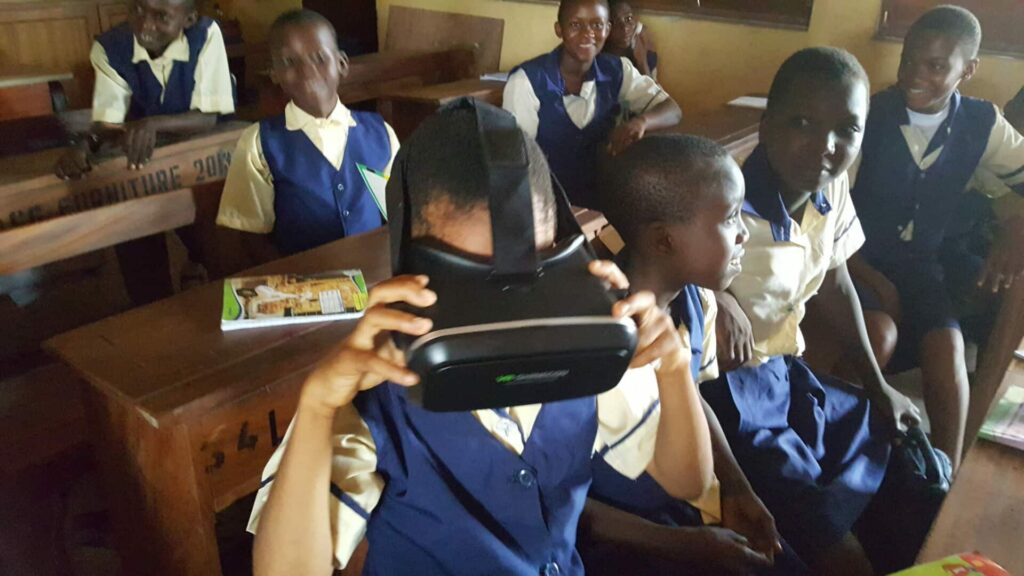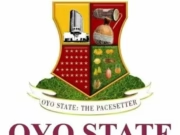In recent years, How Virtual Reality Is Enhancing STEM Education has become a clarion call across education circles in Nigeria and around the world. From the bustling classrooms of Abuja to institutions like AUST-Abuja and Lagos Technical College, young Nigerians are experiencing STEM subjects in ways that defy traditional chalk‑and‑talk methods. Virtual Reality is not just a buzzword – it is rapidly becoming a transformative tool for teaching Science, Technology, Engineering and Mathematics.
Table of Contents

The Emergence of Virtual Reality in STEM Classrooms
Across Nigerian states and many developing countries, educational systems still face challenges: overcrowded classrooms, outdated facilities, and limited hands‑on lab resources. In rural and urban schools alike, many institutions lack up‑to‑date laboratories or funds for field trips. Virtual Reality lets students transcend these constraints. For example, children in Lagos put on headsets to dissect virtual specimens, climb inside a model heart or even tour the solar system, right from their desks. This immersive technology makes abstract concepts tangible and accessible.
Through initiatives such as Imisi 3D—backed by UNICEF Innovation Fund—the technology has already reached Lagos public junior secondary schools. Judith Okonkwo and her team developed VR educational modules in line with Nigeria’s curriculum, used for teaching maths, geography and basic science. Early pilots show increased student enjoyment and retention. A broader study in Abuja and Katsina found secondary pupils in VR‑based physics lessons outperformed those in traditional classes, with girls showing equal understanding to boys.

Benefits of Virtual Reality for STEM Learning
1. Engagement Through Immersive Experience
Students become active participants instead of passive listeners. They walk on Mars in virtual field trips, explore human anatomy in minute detail, and experiment with molecules in chemistry models. The result: improved focus, motivation, and curiosity.
2. Bridging the Resource Gap
By simulating expensive labs or field excursions, virtual Reality brings equity to education. Public and underfunded schools can now offer the same experiential learning as private institutions. Nigerian vocational programmes, like those run by LASTVEB, have introduced AR/VR simulations for automotive and construction training, teaching practical skills to many students who otherwise wouldn’t access such training.
3. Improving STEM Performance
A research study in Sokoto State compared at‑risk secondary students who used VR to those taught by conventional methods. The VR cohort saw engagement rise from 3.5/5 to 4.6/5, mean score gains of some 33 points, and higher interest in lab activities. Similar trends are seen in studies involving programming games like Imikode—showing better comprehension and boosted motivation among first‑year university students.
4. Inclusivity and Equal Access
Students with differing learning styles or disabilities benefit from multisensory VR experiences. With features like text‑to‑speech, haptic feedback and closed captions, virtual Reality fosters inclusive STEM environments. Studies in Nigerian schools also show that female students learn physics as well as male peers when using VR, helping counter gender gaps in STEM.
5. Global Collaboration and Virtual Field Trips
VR enables Nigerian pupils to virtually visit global STEM institutions, museum labs, or meet experts beyond national borders. Students can collaborate with peers internationally, sharing ideas in a shared virtual space. Such virtual field trips and expert interactions expand horizons and inspire career ambitions.
Real‑World Applications in Nigeria
Imisi 3D and Pilot Schools
In Lagos, Imisi 3D has piloted VR modules aligned with curriculum topics like environmental studies, geography and basic science. Both pupils and teachers enjoy the modules, though early feedback shows a learning curve for navigating objects and describing virtual scenes. Imran, a ten‑year‑old, reflects on his first VR lesson: “It’ll be so much easier to learn… you can learn faster and better with it.” Virtual reality is already fulfilling its meaning: inspiration in Yoruba.
Higher Education and Vocational Labs
At the African University of Science and Technology (AUST) in Abuja, students entering engineering discipline use VR design simulations to model and test projects in safety, encouraging practical engineering skills. Lagos State vocational training has also integrated AR/VR for teaching trades, improving enrolment and completion rates.
Challenges of Scaling Virtual Reality in Nigeria
While the promise of virtual Reality is strong, barriers remain:
- Infrastructure Issues: Unreliable power supply and poor internet connectivity limit consistent VR use, especially in rural schools.
- High Initial Costs: Purchasing VR headsets, software licences and content can be prohibitive without support.
- Teacher Training and Support: Educators need training not only in using hardware but in creating and integrating VR content effectively.
- Content Localisation: Most VR resources are produced abroad and may not fully align with Nigeria’s curriculum or language needs. Nigerian‑made content like Imisi 3D is rare but essential.
- Technical Support: Occasional glitches or hardware downtime can disrupt lessons in settings with limited tech support.
The Way Forward: Strategies for Effective Integration
To scale virtual Reality in Nigerian STEM education, several measures are vital:
- Public–Private Partnerships
Collaboration between the government, tech startups like Imisi 3D, NGOs (including UNICEF), and corporate sponsors can mitigate costs and support rollout in pilot states and schools. - Teacher Empowerment Programmes
Investing in training workshops and continuous mentoring ensures teachers can use VR tools creatively and confidently. - Curriculum‑Aligned Local Content
Mobilising local developers and educators to produce VR modules tailored to NERC syllabi and Nigeria’s context bridges relevance and utility. - Infrastructure Improvements
Upgrading grid power, stability, and internet access in schools is essential for sustainable VR use. Devices with offline VR content can help rural pilots. - Research and Impact Assessment
Continued monitoring—like studies in Abaji LGA and Sokoto State—helps quantify learning gains, student engagement trends, and system readiness, guiding policy.
Voices from the Field
Students
The pupils in Lagos trials reported that interactive videos and simulated labs made geography, biology and history more vivid. Many identified video‑based VR lessons as more memorable than image‑only modules.
Teachers
Corper Benedict (serving in Calabar) has championed VR integration in public high schools. He organises workshops to train teachers on affordable VR tools like ClassVR or Google Cardboard and encourages VR “excursions” right in the classroom. Teachers report improved student engagement and deeper understanding of STEM concepts.
Researchers
The Sokoto study concluded that virtual reality instruction raised engagement, performance and interest in lab activities significantly—especially among at‑risk students. A mean gain of 33.4 points in test scores signals statistically significant learning benefits. In Abaji, early research suggests better retention and problem‑solving outcomes in VR classrooms compared with traditional instruction.

Global Perspectives & Comparatives
Internationally, schools in the U.S., U.K. and India are adopting VR labs to teach subjects like anatomy, neuroscience and biology. Central Michigan University, for example, trained high school teachers using Meta Quest 3 to teach anatomy, letting students explore inside virtual brains and hearts ahead of the 2025–26 academic year. In Texas, Diamondback Energy partnered with syGlass to outfit STEM labs at a girls’ academy, enabling immersive neuroscience courses guided by university professors.
Though Nigeria’s VR journey is just beginning, it stands to gain from these models, particularly around teacher preparation, content integration and funding strategies.
Conclusion
How Virtual Reality Is Enhancing STEM Education is no longer aspirational in Nigeria—it is underway, reshaping the way pupils learn and engage with complex concepts. By fostering immersive, inclusive and engaging learning spaces, virtual Reality holds immense potential to close educational disparities. As technology becomes more affordable and locally relevant content grows, VR can become part of mainstream curriculum across Nigeria.
To make this vision a reality, strategic investment in teacher training, infrastructure, local content development and robust research is essential. With collaboration between government, educators, tech startups and international partners, virtual Reality could become the cornerstone of Nigeria’s STEM education transformation—positioning young learners not just to study science, but to experience, explore and innovate with it.
Join Our Social Media Channels:
WhatsApp: NaijaEyes
Facebook: NaijaEyes
Twitter: NaijaEyes
Instagram: NaijaEyes
TikTok: NaijaEyes
READ THE LATEST EDUCATION NEWS








































